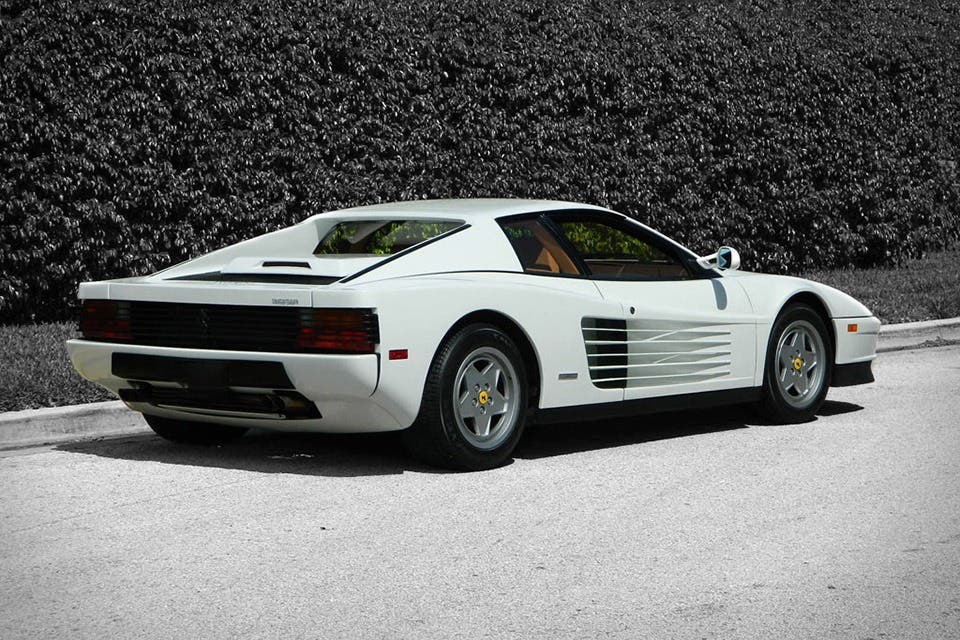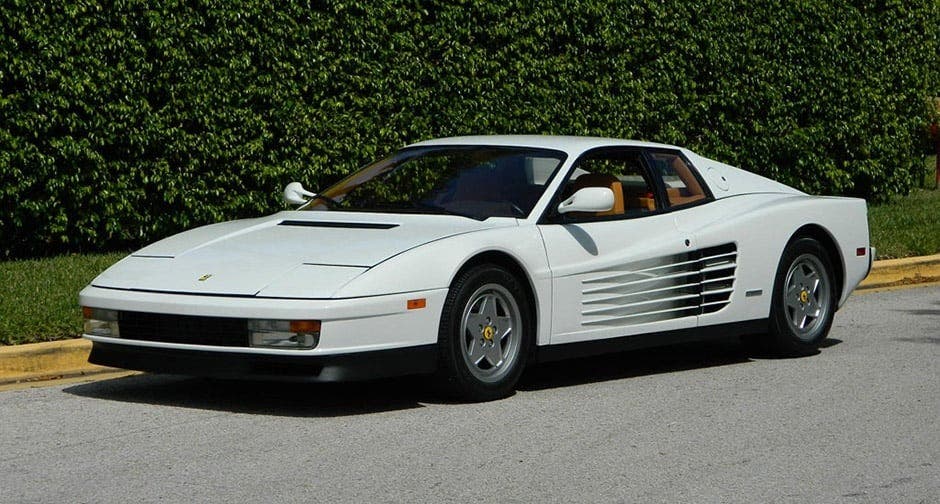Along comes a new film “The Devil in the White City” and Leonardo DiCaprio and Martin Scorsese and one thought immediately goes to the Ferrari Testarossa in “The Wolf of Wall Street.”
“The Wolf of Wall Street” and the white Ferrari Testarossa
The announcement of the new film “The Devil in the White City,” which will once again feature Leonardo DiCaprio and Martin Scorsese working together, has put the spotlight back on one of the most iconic couples in contemporary cinema. But for car enthusiasts, their artistic partnership immediately conjures up a specific image: the white 1991 Ferrari Testarossa featured in “The Wolf of Wall Street.”

In that film, nominated for numerous Academy Awards, the Maranello supercar steals the show, flanked by a Lamborghini Countach. The choice of white color, paired with black leather interior, explicitly recalls the famous TV series “Miami Vice,” as Jordan Belfort (played by DiCaprio) himself pointed out in a scene in the film: “No, no, no. My Ferrari was white, like Don Johnson’s in Miami Vice, not red.”
The Ferrari Testarossa, with its iconic design and breathtaking performance, has become a symbol of the 1980s and 1990s, and its presence in “The Wolf of Wall Street” only adds to the myth. Indeed, Scorsese’s film celebrates the opulence and excess of those years, and the white Testarossa perfectly represents that spirit.
In addition to its aesthetic and symbolic value, the Ferrari Testarossa in “The Wolf of Wall Street” is also a piece of film history. The car used in filming was later sold to a private individual, becoming a cult object for collectors and motor enthusiasts.
The Ferrari Testarossa in the movie
In short, the Ferrari Testarossa, an iconic Italian supercar, has left an indelible mark on the history of cinema, becoming a symbol of luxury, speed and style. Although it is not the most iconic Ferrari ever, it has managed to carve out a starring role for itself in several films, linking its name with world-famous characters and directors.
The Testarossa reached the height of its popularity thanks to the television series Miami Vice, where its white bodywork and streamlined lines became a hallmark of protagonists Sonny Crockett and Rico Tubbs. However, its success was not limited to the small screen.
The Italian supercar has also appeared in blockbuster films such as Martin Scorsese’s “The Wolf of Wall Street,” starring Leonardo DiCaprio. In this film, the Testarossa becomes a symbol of the rise and fall of the protagonist, Jordan Belfort, played by DiCaprio himself.
Although his presence in “The Wolf of Wall Street” is limited to a few scenes, the Testarossa manages to capture the viewer’s attention, becoming a key element of the narrative. Its appearance underscores the power, wealth and obsession with success that characterize Belfort’s character. Thanks to Miami Vice and other films, white has become one of the most iconic colors for the Ferrari Testarossa. This hue, which evokes luxury and sophistication, has helped make the Italian supercar even more desirable, fueling the myth surrounding it.
Pininfarina-signed Testarossa design and engine
The Pininfarina-signed design of the Testarossa is instantly recognizable and unmistakable. The taut, aerodynamic lines, wide flanks and side air intakes, hallmarks of this model, give it an imposing, muscular appearance. The rear end, in particular, with its pop-up headlights and grille hinting at the powerful V12 engine, is a true masterpiece of style.
The heart of the Testarossa is a 5-liter V12 engine, capable of delivering 390 hp and a top speed of over 290 km/h. But beyond the numbers, what makes this engine special is its sound, a soul-stirring Rossinian crescendo that has won over even the likes of maestro Herbert von Karajan.

